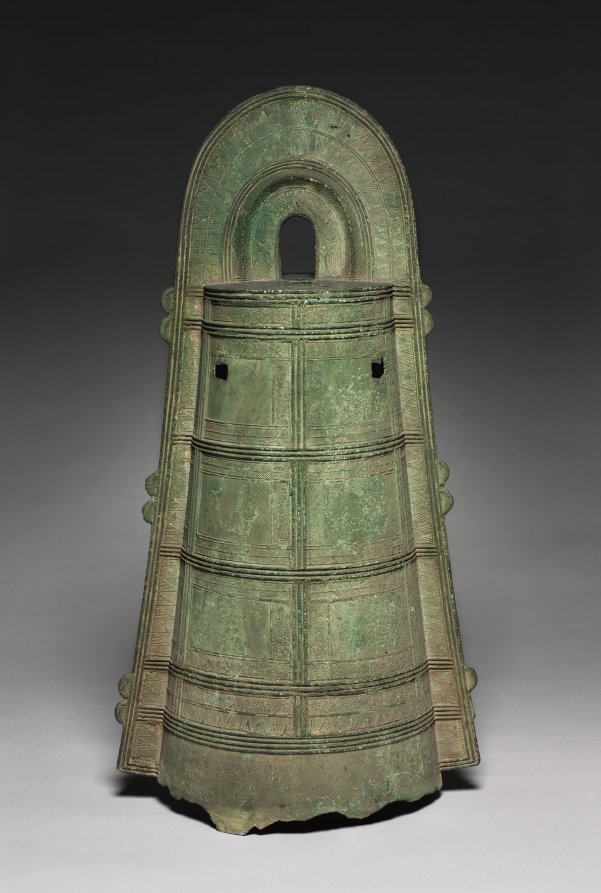| schema:description 10 | "collection: Japanese Art" |
| schema:description | "tombstone: Dotaku, 100-200. Japan, Yayoi Period (c. 4th century BC-c. 3rd century). Cast bronze; overall: 97.8 x 48.9 cm (38 1/2 x 19 1/4 in.). The Cleveland Museum of Art, Gift of Mrs. Arthur St. John Newberry 1916.1102...(more)" |
| schema:description | "culture: Japan, Yayoi Period (c. 4th century BC-c. 3rd century)" |
| schema:description | "creditline: Gift of Mrs. Arthur St. John Newberry" |
| schema:description | "type: Metalwork" |
| schema:description | "id: 95336" |
| schema:description | "current_location: ArtLens Exhibition A" |
| schema:description | "measurements: Overall: 97.8 x 48.9 cm (38 1/2 x 19 1/4 in.)" |
| schema:description | "wall_description: The flow of new peoples from Korea to Japan during the Yayoi period brought new technologies of bronze and iron casting. Similarly, the form of the <em>dotaku</em>, or bronze bell, is thought to have originated in Korea. The original Korean prototypes—stout, thickly cast bells—were transformed in Japan into sculptural forms with sophisticated surface decoration. These dotaku are often uncovered near burial sites paired with a metal spear or sword nearby, suggesting ceremonial importance....(more)" |
| schema:description | "technique: cast bronze" |

